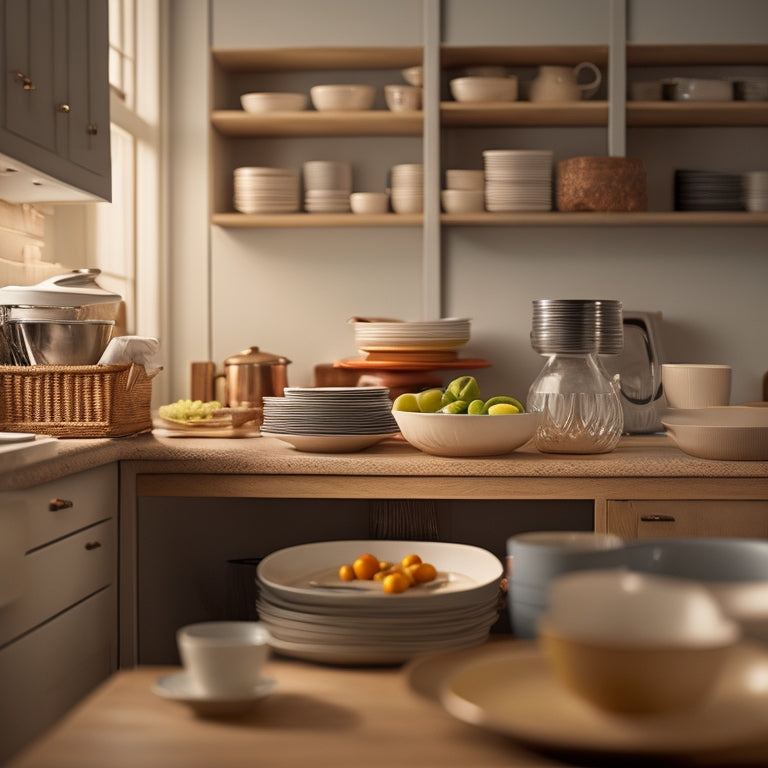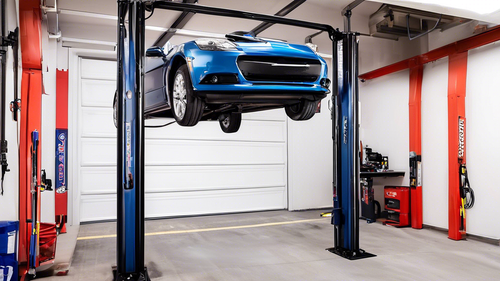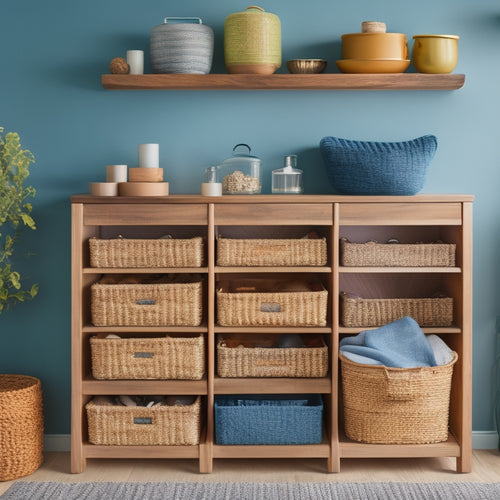
3 Tips to Organize Your Plate Drawers
Share
You've likely accumulated a collection of plates over the years, which can lead to cluttered and disorganized plate drawers. To get your plate drawers in order, start by purging chipped, broken, or outdated plates and categorizing the remaining ones by type, such as dinner, dessert, or specialty. Next, optimize your storage by stacking plates, alternating directions to minimize scratching, and using racks or dividers for easy access. Finally, establish a weekly maintenance routine to keep your drawers tidy and organized. By following these tips, you'll be well on your way to a clutter-free space that's easy to maintain, and uncover even more ways to refine your plate drawer organization system.
Key Takeaways
- Purge chipped, broken, or outdated plates to declutter your collection and implement daily tidying routines for a clutter-free environment.
- Categorize remaining plates by type, such as dinner, dessert, or specialty, to optimize storage and accessibility.
- Use stacking techniques, alternating plate directions, and place paper plates between fine china to enhance storage efficiency and prevent damage.
Purge and Categorize Your Plates
Your plate collection has likely accumulated over time, and it's not uncommon for it to become cluttered with items you no longer need or use.
Take this opportunity to purge your collection, getting rid of chipped, broken, or outdated plates. To maintain a clutter-free environment, consider implementing daily tidying routines and scheduling regular decluttering sessions streamlining living spaces.
Categorize your remaining plates by type, such as dinner plates, dessert plates, and specialty plates. This will help you determine what storage solutions you need.
Consider the size and shape of each plate type when selecting storage solutions. You may need separate compartments or dividers for different plate types.
Optimize Plate Drawer Storage
Now that you've purged and categorized your plates, it's time to maximize the storage space in your plate drawers. To optimize storage, consider the following techniques:
| Stacking Techniques | Benefits |
|---|---|
| Alternate plate directions | Reduces scratching and chipping |
| Place paper plates between fine china | Protects delicate plates from scratching |
| Store plates on their edges | Saves space and prevents chipping |
| Use plate racks or dividers | Keeps plates organized and prevents clutter |
| Stack plates by size | Easy access to frequently used plates |
Use drawer dividers to separate your plate categories and keep them organized. This will help you find what you need quickly and prevent clutter from building up again. By implementing these techniques, you'll be able to fit more plates in your drawers and keep them organized.
Implement a Maintenance Routine
With your plate drawers optimized, it's time to assure they stay that way.
To maintain your newly organized space, set up a cleaning schedule to guarantee your plate drawers remain clutter-free and organized. Aim to dedicate 10-15 minutes each week to tidying up your plate drawers.
During this time, perform a quick drawer inspection to identify any items that are out of place or need to be put away. Additionally, wipe down the drawers with a damp cloth to remove any dust or debris that may have accumulated.
Frequently Asked Questions
How Do I Handle Oversized or Irregularly Shaped Plates?
When dealing with oversized or irregularly shaped plates, you'll need to adjust your stacking techniques. Consider using protective padding, like cloth or paper inserts, to prevent scratching and chipping, and strategically place them in a way that maximizes storage space.
Can I Store Plates in a Drawer With a Sliding Organizer?
Are you tired of cluttered plate storage? You can store plates in a drawer with a sliding organizer, using drawer dividers to separate and protect them, and plate stacking to maximize space - it's a transformative solution for your kitchen organization!
What if I Have Limited Drawer Space for My Plates?
When you're dealing with limited drawer space, you're not stuck. You can maximize your plate storage by using clever stacking techniques and vertical storage solutions, allowing you to fit more in less space without sacrificing accessibility.
How Often Should I Wash Plates Before Putting Them Away?
You should wash your plates after every meal to maintain good plate hygiene, but if that's not possible, aim to wash them at least every 2-3 days to prevent bacterial growth and keep your dishes clean.
Are There Any Plate Storage Solutions for Corner Cabinets?
You'll find perfect plate storage solutions for corner cabinets by using adjustable cabinet dividers that allow for efficient plate stacking, maximizing the often-wasted space in these tricky areas, and keeping your plates organized and easily accessible.
Related Posts
-

Can I Put a Car Lift in My 10-Foot Garage?
Can I Fit a Car Lift in My 10-Foot Garage? The Ultimate Guide Hey there, garage enthusiasts! If you're like me, yo...
-

Declutter Your Drawers: 10 Genius Storage Hacks
You can breathe new life into your cluttered drawers by implementing a few genius storage hacks. Start by maximizing ...
-

Why Wasted Corners in Your Home Exist
You've likely noticed that corners in your home often remain idle and underutilized, a phenomenon rooted in a combina...


